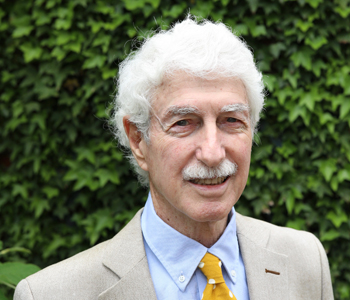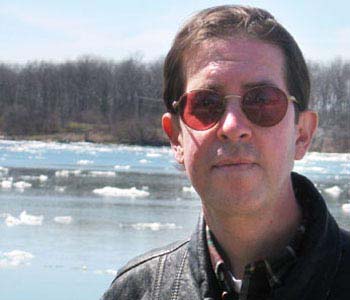Elliot R. Wolfson
A Dream Interpreted within a Dream: Oneiropoiesis and the Prism of Imagination
Zone Books
576 pages, 6 1/4 x 9 1/8 inches
ISBN 978 1935408147
A Dream Interpreted within a Dream grapples with the allusive and elusive place dreaming occupies in the panorama of human experience. Drawing on a variety of contemporary academic disciplines, I set out to illustrate that the dream state and waking reality are on an equal phenomenal footing; that the sensory world is the dream from which one must awaken by waking to the dream in which one is merely dreaming that one is awake. By interpreting the dream within the dream, I articulate how a productive paradox emerges to reveal the wakeful character of the dream and the dreamful character of wakefulness.
To elucidate the oneiric phenomenon, I have applied theoretical models from psychoanalysis, phenomenology, literary theory, and neuroscience to a vast array of biblical, rabbinic, philosophical, and kabbalistic texts.
In my judgment, no one morphology of the dream phenomenon is either sufficient or comprehensive. Rather, I propose a linguistic archaeology of the dream, a philosophically inflected excavation of a psychological phenomenon that celebrates the contingent and ambiguous as signifiers of truth conceived as proportionate to, but not prescribed by nature.
As such, the dream is classified as the experience of transcendence under the sign of the imaginary. However, this classification in no way implores one to posit a supernatural world in order to flee from the cognitive implications of naturalistic approaches to the human predicament. Rather, the transcendence associated with the dream is intertwined with the configuration of the world, the immanentizing transcendence that enframes the visual field of human experience.
The writing of this book is a natural stage on my path. Since I was a child I was immersed in the study of Jewish texts, and then in college I began to master the field of Western philosophy, with a particular emphasis on phenomenology and hermeneutics. I decided after completing a degree in philosophy to pursue the study of Jewish philosophy and mysticism, focusing on medieval kabbalah. In my scholarly research in the history of Jewish mysticism I have availed myself of my training in philosophy, literary criticism, feminist theory, postmodern hermeneutics, and the phenomenology of religion. Perhaps my most significant contribution to the field is challenging the rigid disciplinary boundaries separating philosophy and mysticism, and, in addition, my attempt to use contemporary theoretical models to study classical and medieval texts.
I have also expanded the study of Jewish mysticism by drawing analogies and comparisons with mysticism in other religious cultures including Christianity, Islam, Hinduism, Taoism, and Buddhism. I have been particularly interested in the role of the imagination and the hermeneutics of esotericism, as is attested in many of my publications, including Through the Speculum That Shines: Vision and Imagination in Medieval Jewish Mysticism (1994) and Language, Eros, and Being: Kabbalistic Hermeneutics and the Poetic Imagination (2005).
The two themes converge in this book on dreams wherein I argue that dreaming is a genre of maximal imaginality revealed in the image concealing its character as image.
The dream, on this score, fosters the appearance of the inapparent, disclosing thereby the limit delimited and yet breached by the imagination in unveiling the image whence it is disclosed that the substance of the dream can be phenomenally present only in being absent.
The dream, in other words, is the phantasm that allows us to see the chimerical nature of the phantasm, the speculum through which we perceive the speculum as that through which we perceive the speculum. In piercing through this prism, we discern the invariable and unsettling truth that the image is true to the degree that it is false and false to the degree that it is true.
In a Platonic reversal, therefore, we can speak of the dream as the semblance of the simulacrum par excellence wherein truth is not opposed epistemically to error, since the appearance of truthfulness cannot be determined independently of the truthfulness of appearance.
I do not think I can privilege one part of the book over another, but the Preface would be sufficient to draw the reader into the book, since it gives in brief terms my interest in the topic and enough of my background to understand my approach, which can be summed up as follows: dreams have a logic of their own, a mythologic, to be exact, and from this assumption a critical hermeneutical rule can be inferred: dreams display the concurrence of purportedly contradictory or incongruent images. Consequently, to heed the cadence of the dream, we do well to appropriate a calculus of the non-calculable, embracing the paradox that opposites are the same in virtue of being opposite.
It is my hope that A Dream Interpreted within a Dream will be read by a wider audience than just specialists in Jewish mysticism, since I engage so many disciplines and so many thinkers in this book.
I also hope that there may be neuroscientists who take an interest in the book. One of my goals was to provide a bridge between the humanities and the sciences. I do not ignore the findings about dreams in neuroanatomy; on the contrary, I argue that my main insight that the dream exemplifies the paradox of the oxymoron fictional truth, a truth whose authenticity can be gauged only from the standpoint of its artificiality, is in accord with the scientific perspective. In particular, I argue that this quality of the oneiropoetic is related to a manner of behavior that some primatologists have even explained as the factor that accounts for the ascendancy of human beings in the evolutionary chain: while other species exhibit activities that we classify as play or sport, and even as tactical deception—indeed trickery and cunning have been flagged as key aspects in the development of social cognition amongst primates—the hominid with the largest neocortex has the greatest facility to deceive. What likely began as a congenital propensity to lie in order to maximize reproductive opportunities and the potential for survival mutates at the top of the biopyschosocial tree into the fanciful art of combining the credible and incredible, the willful effort to deceive the other by concealing truth in the shroud of lie, without any discernible utilitarian benefit or pragmatic advantage.
I do side with those who detect in the dream a mythopoeic propensity that cannot be subsumed under the stamp of scientific explanation, no matter how broadly the criterion of empirical data is conceived. This is not to say that I deny that the contents of the dream can be explained as neural correlates of consciousness. On the contrary, in my way of thinking, the cerebral activity of dreaming should be considered exemplary of the increased aptitude for abstraction and ratiocination that developed in the hominid brain as a consequence of the multimodal sensory integration. Through a process of evolutionary selection this augmented apperception, enhanced intelligence, and the ensuing refinement of the nervous system formed what has legitimately been called the numinous mind, a degree of mentation typified above all by the symbolic cognition that has endowed us with a myriad of incomparable traits, including the proclivity to imagine the unimaginable.
The emblematic language of dreaming, likely to have originated as a mechanism of social organization aimed at the preservation of the species, becomes a pivotal feature that distinguishes ape-like mentality from human-like consciousness. The hominization of primates eventuated in increasingly complex biopsychological adaptations that bestowed on humans the mental capacity to have eidetic dreams. Hence, the challenge in this book to the reduction of mindfulness to biochemical structures and electromagnetic fields emerges from the findings of neuroscience itself. The penchant to think the unthinkable should be granted as much integrity as other acts of human imagination conventionally judged to be nonpathological.




We don't put paywalls. We don't distract you with ads. We don't sell your data.
Please help to keep this running!